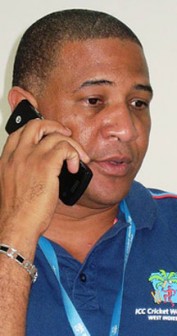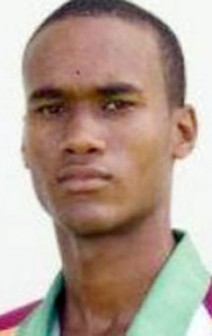Says Donald Duff
To use a popular phrase “Give Jack he jacket,” it seems, at the very least, that the West Indies cricket Board (WICB) is right on one count which is, that the standard of cricket played in the region is low.
This year’s regional four day first class season was a case in point.
This year’s tournament included one foreign team – the England Lions – and the results will show that the Lions were held to draws by Jamaica, Trinidad, Barbados, Guyana and the Combined Campuses and Colleges teams and that they defeated the Leeward Islands by an innings and 120 runs, and the Windward islands by 258 runs.
Had had it not been for heavy rainfall in their match against Guyana, surely the Lions would have roared to another outright win especially since the Guyanese were shot out for 78 in their first innings.
What was remarkable was that apart from the match against Guyana, the English Lions batsmen scored a century in every match they played this season and except for the match against Jamaica, led each territory on first innings.

It would be fair to deduce then that the English team was superior in at least the batting, if not other departments of the game.
Improving the standardof regional cricket
It is a moot point that the England Lions team included players with test and One Day International experience for some of the region’s teams also included players with test and one day international experience for the West Indies.
So it is fair to say that the WICB is spot on in their assessment of the West Indies Regional competition and is correct in continuing to look at ways to improve the standard including doing something about the pitches. Any discussion aimed at improving the standard of regional cricket must start with the pitches and the supporting facilities for players to train.
For years ex test players, cricket writers and even opposing teams have repeatedly complained about the substandard pitches in the West Indies.
And while I see no reason why the WICB should not continue with the experiment of bringing foreign teams for their regional season, perhaps they can also look at improving the quality of the pitches and proving the supporting infrastructure for the cricketers to improve their physical conditioning.
So far the WICB has been right at least one count. Let us see where they have gone wrong.
The business of cricket
Cricket is a business and the WICB must understand that they are in charge of operating a multi million dollar business which if they are savvy they can turn into a handsome profit.
Taking a look at the audited financial report of the WICB for last year one feels they can do a lot better.
It is known that the WICB derives most of its revenue from television receipts with gate receipts also contributing towards that income.
This is why, despite the protestations of the Chief Executive Officer (CEO) Dr. Ernest Hilaire, the decision to omit star players Chris Gayle, Ramnaresh Sarwan and Shiv Chanderpaul simply does not make sense at least not from a financial standpoint.
Even the hugely popular IPL in India could not have had the same measure of success without the stars, foreign or local. The reasons why IPL franchises pay huge sums of money for the star players to play on their team are in order to attract the fans and also to help them win.

These simple facts seem to be lost on the WICB who seem wont to treat their star players like an errant stepchildren.
Cricket, like many other team sports, depend a lot on those marquee names to attract the fans and one would hope that the WICB coffers did not take a dip in this Digicel series simply because of the absence of the above named trio.
Dr. Hilaire tried to explain the omission of Gayle and company by stating: “The selectors have a Selection Policy and are moving forward and building a broad pool of international players. The first action is to expose more players. And that does not mean that the WICB is abandoning older players.”
While what Dr. Hilaire said has some amount of merit, the WICB still needs to consider the fans who pay their hard earned money not to see the West Indies lose a series by the time the third ODI is finished, but to be able to see some of the batting exploits that Gayle reserved for his new franchise, the Royal Challengers Bangalore when he slammed a century in his first game.
Another thing, the rebuilding of West Indies cricket is not short term but long term. There is no cosmetic fix, no amount of make up that can cover the cracks that the just concluded regional series and the record of the West Indies senior team over the years have not already exposed.
The problem of rebuilding West Indies cricket cannot be solved simply by exposing more players to international cricket.
No! There are many other factors involved and while it is absolutely necessary for some players to get international exposure, those players must satisfy the requirements of the coaches and the selectors that they are like that special talent Kraigg Brathwaite, worth the investment.
It must first start with young players around the ages of seven or eight. These players must be exposed to coaching at a level designed to help them develop the basics of playing cricket.
The next step must be talent spotting, the weeding out of those players whom the coaches feel will never make the grade.
The third step is for the remaining players to benefit from expert coaching from a cadre of coaches specially identified for such a purpose coaching aimed at honing their techniques and giving them exposure in the form of weekend matches to assess their development.
I can go on an on but I think the WICB should get the message; rebuilding should start with the youths.
Far too often cricketers at the Under-19 and Under-15 levels are seen with glaring faults that should have been corrected.
It is the little intangibles, those faults that an experienced bowler or batsman notices that can make the difference between success and failure.
If they have not done so already, perhaps it is time that the WICB develop a coaching manual for players under the ages of 15 which should be used in all the territories.
They should also employ more coaches tasked with the responsibility of helping the young players become technically correct. The rest will fall into place.
Finally, Dr. Hilaire spoke of success at the 2015 World Cup.
“As part of the WICB medium term plan of action to win the 2015 Cricket World Cup we have recognized that we need a broad pool of experienced players. Only 11 players can play at any one time and as the WICB seeks to expose more players some of the proven international players will be rotated,” he declared
Here again, the WICB must understand that success in international cricket does not come so easy or in such a short space of time.
It would be better for the WICB to set a goal of trying to move the regional team up from near the bottom of the ladder where they reside before thinking of winning a World Cup competition.
Simply put, the West Indies senior team is not within reach of that goal.
Before thinking of winning the World Cup, the WICB would be better advised to try and have the team well positioned in the ICC ranking system before embarking on such a lofty goal.
In the latest ICC One Day International ranking list the West Indies lie in eighth position ahead of only Bangladesh, Ireland, Zimbabwe, the Netherlands and Kenya.
Surely any talk of winning the 2015 World Cup at this stage is far fetched. Had the ICC not decided to rethink its policy about reducing the number of teams in the World Cup competition and had instituted a cut off point based on the ICC ranking list it is doubtful at this stage whether the West Indies could actually qualify for the 2015 World Cup.





